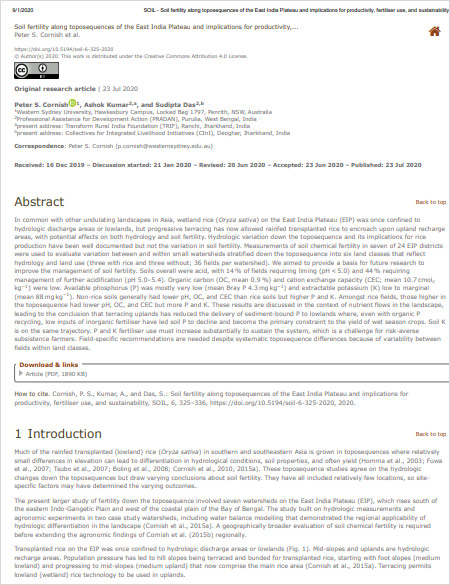Soil fertility along toposequences of the East India Plateau and Implications for Productivity, Fertiliser use, and Sustainability

In common with other undulating landscapes in Asia, wetland rice (Oryza sativa) on the East India Plateau (EIP) was once confined to hydrologic discharge areas or lowlands, but progressive terracing has now allowed rainfed transplanted rice to encroach upon upland recharge areas, with potential effects on both hydrology and soil fertility. Hydrologic variation down the toposequence and its implications for rice production have been well documented but not the variation in soil fertility. Measurements of soil chemical fertility in seven of 24 EIP districts were used to evaluate variation between and within small watersheds stratified down the toposequence into six land classes that reflect hydrology and land use (three with rice and three without; 36 fields per watershed). We aimed to provide a basis for future research to improve the management of soil fertility. Soils overall were acid, with 14 % of fields requiring liming (pH < 5.0) and 44 % requiring management of further acidification (pH 5.0–5.4). Organic carbon (OC, mean 0.9 %) and cation exchange capacity (CEC; mean 10.7 cmol kg ) were low.

